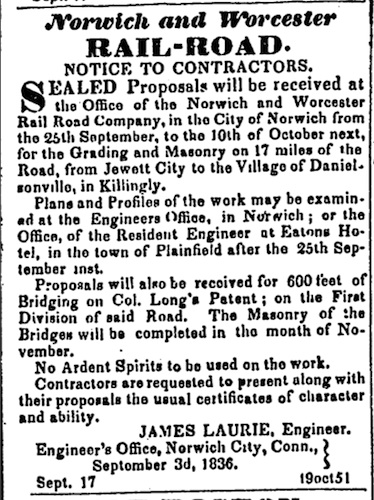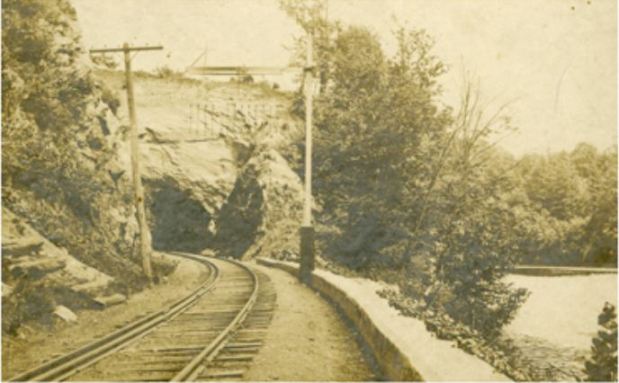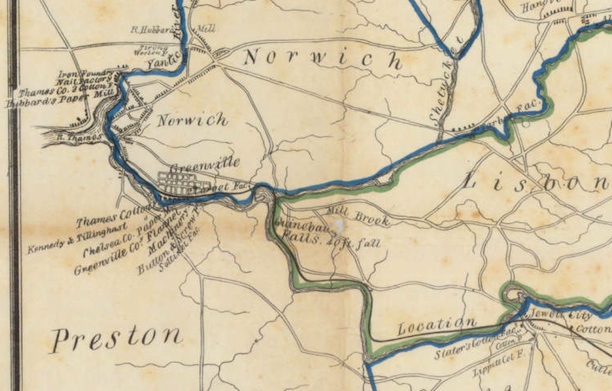
An ad for the Norwich and Worcester Rail-Road for contractors from the September 17, 1836, edition of the Hartford Times
On August 28, 1837, the directors of the Norwich and Worcester Railroad celebrated the completion of the Taft Tunnel in Lisbon. The first railroad tunnel in Connecticut and among the earliest tunnels built in America; it remains one of the oldest railroad tunnels still in active use. Dr. Nott, of Franklin, delivered the prayer at the dedication and Asa Child, Esq., general agent of the company, delivered the address to the assembled crowd.
At this time, Railroad transportation was relatively new to Connecticut, which chartered its first railroads in 1832. Built to connect the waters of Long Island Sound with the manufacturing heart of Massachusetts, the Norwich to Worcester line covered the route in the shortest possible distance. In a study conducted by Roger Huntington prior to its construction, Huntington estimated that businesses transported 15,000 tons of goods along this route annually (excluding the towns of Norwich and Worcester). The goods included paper and iron as well as products from the 27 woolen and 75 cotton mills along the route.
James Laurie, co-founder of the American Society of Civil Engineers and chief engineer for the railroad, oversaw the project. Due to the drastic change in elevation near Quinnebaug Falls it became necessary to tunnel through the hill. Builders initially found much of the rock to be unstable and a passage from the summit to the foundation had to be opened for 75 feet before the men could even begin to tunnel through solid rock. The result was a slightly curved, narrow tunnel measuring 300 feet long by 23 feet wide and 18 feet high. The tunnel is currently part of the Providence and Worcester Railroad.

Taftville Tunnel. Photograph by an unknown photographer, ca. 1900 – Connecticut Historical Society









